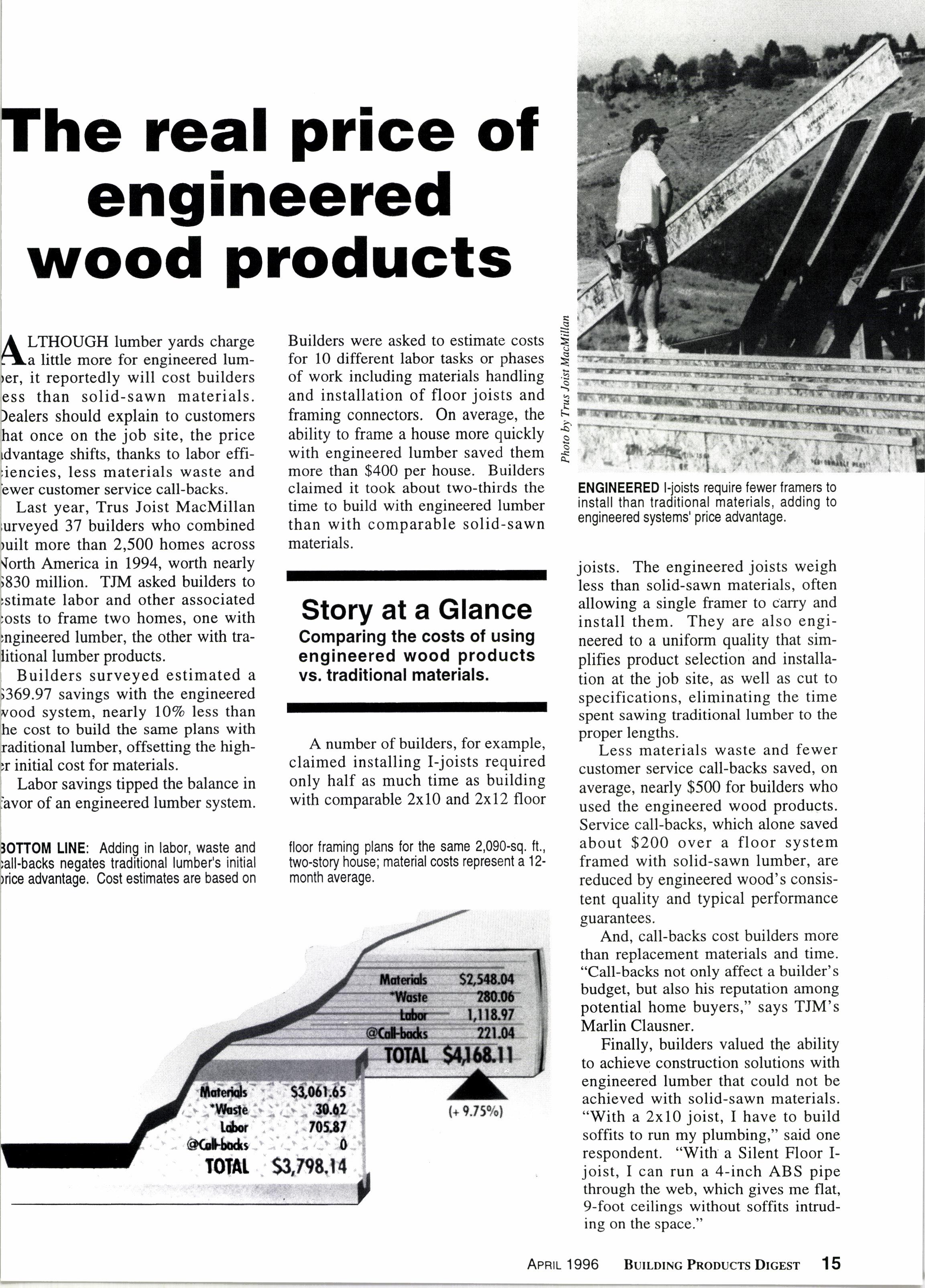
1 minute read
he real price of engineeredwood products
LTHOUGH lumber yards charge little more for engineered lum, it reportedly will cost builders than solid-sawn materials. should explain to customers once on the job site, the price vantage shifts, thanks to labor effiiencies. less materials waste and customer service call-backs.
Last year, Trus Joist MacMillan
37 builders who combined ilt more than 2,500 homes across America in 1994, worth nearly 30 million. TJM asked builders to labor and other associated to frame two homes. one with lumber, the other with tralumber products.
Builders surveyed estimated a 369.97 savings with the engineered system, nearly 107o less than cost to build the same plans with itional lumber, offsetting the highinitial cost for materials.
Labor savings tipped the balance in vor of an engineered lumber system.
ITOM LINE: Adding in labor, waste and -backs negates traditional lumbe/s initial advanta{e. Cost estimates are based on
Builders were asked to estimate costs for 10 different labor tasks or phases of work including materials handling and installation of floor joists and framing connectors. On average, the ability to frame a house more quickly with engineered lumber saved them more than $400 per house. Builders claimed it took about two-thirds the time to build with engineered lumber than with comparable solid-sawn materials.
Story at a Glance
Comparing the costs of using engineered wood products vs. traditional materials.
A number of builders, for example, claimed installing I-joists required only half as much time as building with comparable 2x10 and 2x12 floor lloor traming plans for the same 2,090-sq. ft., two-story house; material costs represent a 12month average. joists. The engineered joists weigh less than solid-sawn materials, often allowing a single framer to carry and install them. They are also engineered to a uniform quality that simplifies product selection and installation at the job site, as well as cut to specifications, eliminating the time spent sawing traditional lumber to the proper lengths.
ENGINEERED l-joists require fewer framers to install than traditional materials, adding to engineered systems' price advantage.
Less materials waste and fewer customer service call-backs saved, on average, nearly $500 for builders who used the engineered wood products. Service call-backs, which alone saved about $200 over a floor system framed with solid-sawn lumber, are reduced by engineered wood's consistent quality and typical performance guarantees.
And, call-backs cost builders more than replacement materials and time. "Call-backs not only affect a builder's budget, but also his reputation among potential home buyers," says TJM's Marlin Clausner.
Finally, builders valued the ability to achieve construction solutions with engineered lumber that could not be achieved with solid-sawn materials. "With a 2x10 joist, I have to build soffits to run my plumbing," said one respondent. "With a Silent Floor Ijoist, I can run a 4-inch ABS pipe through the web, which gives me flat, 9-foot ceilings without soffits intruding on the space."










